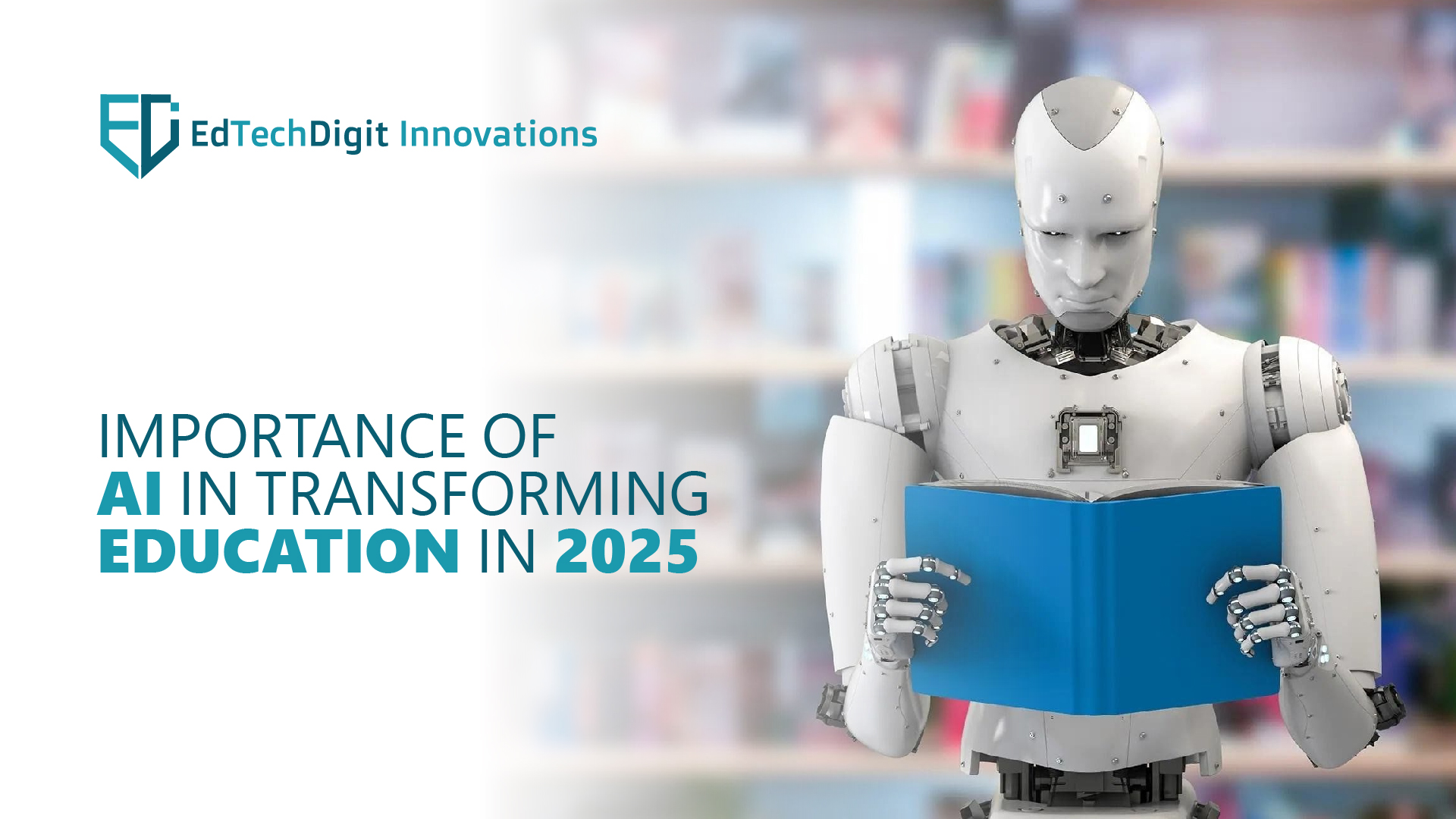One of the most advanced technologies today, artificial intelligence, is leaving its footprint across all industries and personal lives. From boosting business productivity and making them more efficient to make our lives convenient through automated robots, autonomous vehicles, virtual assistants, and more, the role of AI is only growing. So, artificial intelligence for education is also not a surprising concept. Ever since its inception, institutions and EdTech organizations have been trying to find ways to integrate AI to enhance the teaching and learning experience and streamline educational administrative tasks.
In this article, we will understand how advanced AI technologies are used in the education industry for better learning, productivity, and administration. We will also explore the challenges faced and how to address them for maximum impact.
Key Takeaways:
- AI enhances education by automating mundane and repetitive tasks to free up teachers’ time and provide personalized interactions.
- AI in schools should be used responsibly and designed with proper collaboration focusing on equity and accessibility.
- Apart from using AI tools for education, teachers, students, and parents, should also be made aware of the potential risks of using AI and the best practices for using AI technology for education.
So, let’s begin.
The Education 4.0 Alliance
The Education 4.0 Alliance is an important initiative that focuses on making education suitable for the demands of the Fourth Industrial Revolution. It aims at:
- Transforming education by integrating technology like AI and other innovative teaching methods
- Empowering learners with essential skills needed to thrive in a rapidly evolving technological world
- Identifying and developing skills for the future such as critical thinking, problem-solving, digital literacy, etc., especially in early childhood education.
- Encouraging collaboration between governments, businesses, universities, and educators to bring a systematic change in the education industry.
The Education 4.0 Alliance acknowledged the growing importance of AI technology in education and through its latest report – Shaping the Future of Learning: The Role of AI in Education 4.0, it highlights several key things to properly assist with the vision of Education 4.0.
Achieving Education 4.0 with AI
Here are a few ways in which AI technology and education are combined to achieve the vision of Education 4.0 and shape the future of education:
-
Supporting the teacher’s roles
AI can make a teacher’s life easier by reducing their workloads by automating their regular tasks and giving them more time to interact with students. This augmentation of work will not replace the teachers, but is an effective way to address the problem of shortage of teachers and enhance learning. Human-centric teaching in combination with AI in schools can create a more effective educational environment.
-
Refining assessment and analytics
AI can prove to be a great technology to make the assessment process more effective by providing teachers with detailed insights into learning trends and other non-standardized tests. With real-time analysis of student performance, teachers can design a more targeted instruction plan and provide timely feedback, which can help improve the overall educational outcomes.
-
Supporting AI and digital literacy
Today, when the world is becoming highly digital, and businesses are heavily relying on data-driven decisions, the need to address the digital skill gap is higher than ever and it is absolutely necessary to prepare students for future employability.
AI can help develop critical thinking, problem-solving, and digital literacy and prepare students for the future of work.
-
Personalizing Learning
Most importantly, AI helps with personalized learning and helps with enhanced learning experiences. AI educational platforms can provide benefits of individual tutoring and customize the course content as per individual students’ needs. So, students who are physically or mentally challenged can also enjoy effective learning through AI and improve their academic performance and accessibility.
Challenges of Using AI in Education
Integration of technology and education, although it offers several advantages, it also comes with a lot of challenges such as:
- AL algorithms can have biases in the training data, which can lead to inappropriate learning outcomes
- Collecting and storing student data also raises concerns about their data privacy and data misuse
- Relying too much on AI can affect social-emotional learning and teacher-student relationships
- Concerns also exist related to AI’s role in decision-making and how they arrive at a conclusion
- Moreover, there is unequal access to technology and digital literacy which can further widen the existing educational disparities.
Conclusion
The combination of technology and education is gaining huge traction. Not just AI, but all the previous technologies also had a huge impact on the education sector. For example, when AI was not so prevalent, then also online learning existed. So, technology and education go hand in hand. By addressing the challenges posed by AI, that we discussed above, EdTech companies, institutions, and government, can ensure a proper use of AI to enhance learning and teaching experience, make them more accessible to everyone, and ensure ethical considerations are met.
As we enter the future, online education, personalized learning, adaptive learning, etc., will become more prevalent. It is up to institutes how they leverage AI and offer the best learning experience to students and streamline other administrative tasks using AI and other technologies. Overall, AI is going to be transforming education in 2025 and in the years to come.

